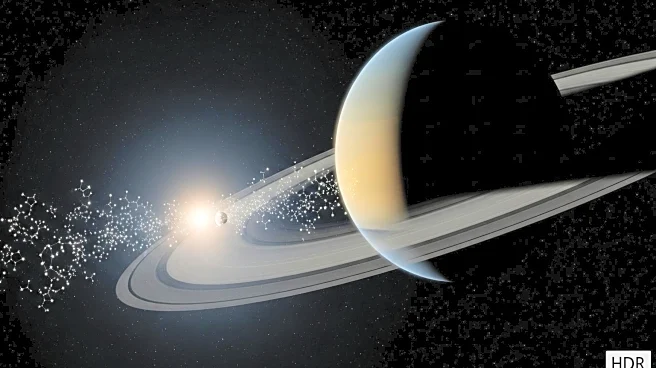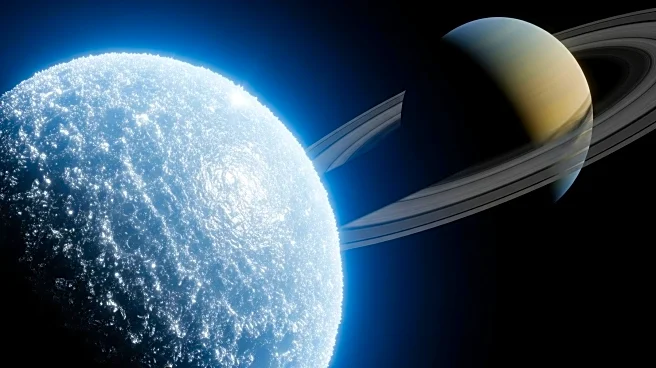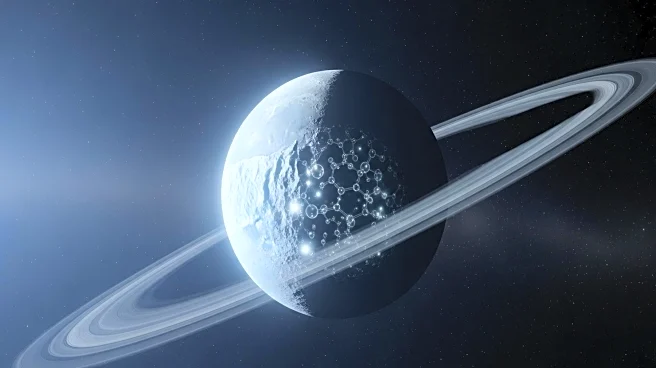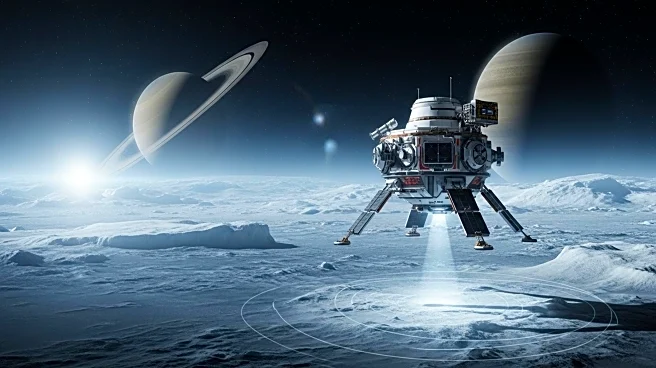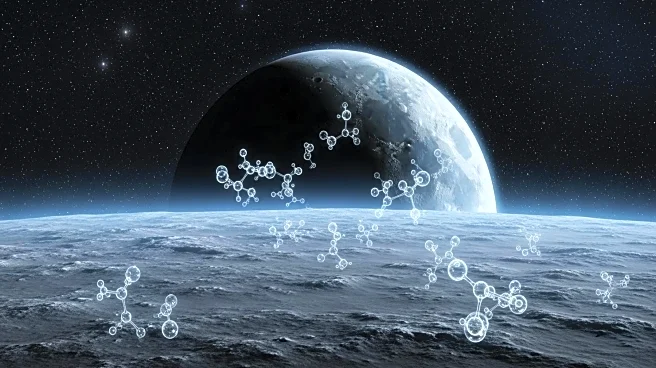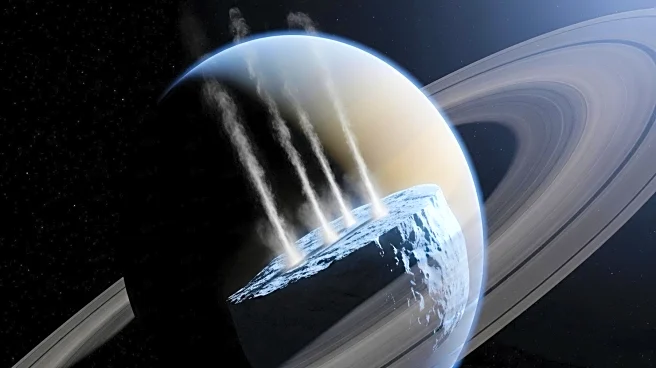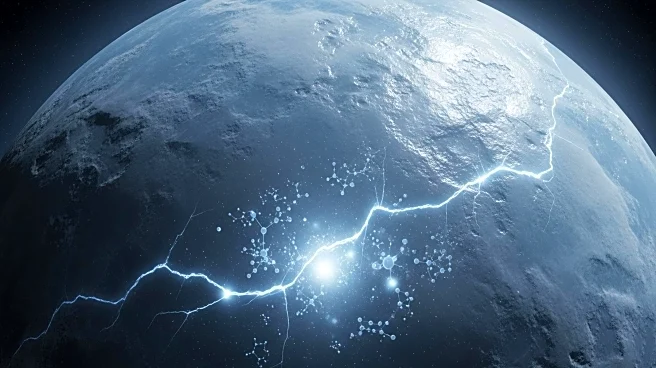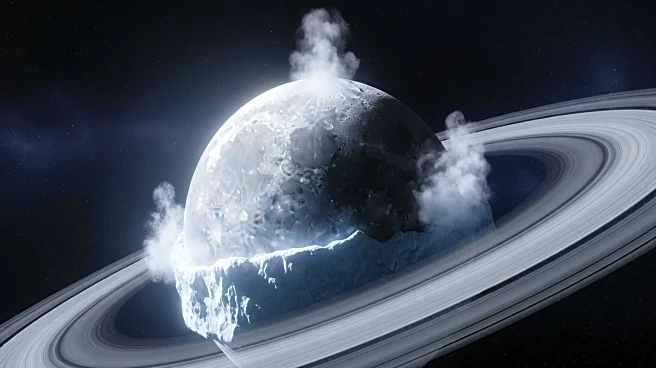What's Happening?
Recent analysis of data from NASA's Cassini spacecraft has revealed complex organic molecules in the plumes of Saturn's moon Enceladus. These molecules, which are part of the chemical reactions that can lead to life's building blocks, were found in the icy grains ejected from the moon's subsurface ocean. The discovery strengthens the case for Enceladus as a site of astrobiological interest. Cassini's mission, which ended in 2017, continues to provide valuable insights through its archived data. The presence of these organic molecules suggests that they originate from the ocean beneath Enceladus' icy surface, rather than being a product of space radiation.
Why It's Important?
The discovery of organic molecules on Enceladus has significant implications for the search for extraterrestrial life. It suggests that the moon's subsurface ocean may harbor the necessary conditions for life to develop. This finding could influence future missions to Enceladus, as scientists aim to explore its potential habitability further. The presence of these molecules also contributes to our understanding of the chemical processes that occur in space, offering insights into how life might arise elsewhere in the universe.
What's Next?
The European Space Agency is considering a mission to Enceladus, potentially featuring an orbiter and lander, to arrive in 2054. This mission would aim to sample fresh ice directly from the moon's surface, providing more definitive evidence of the ocean's chemical composition and its potential for supporting life. Such a mission could resolve current uncertainties about the origin of the organic molecules detected by Cassini.

